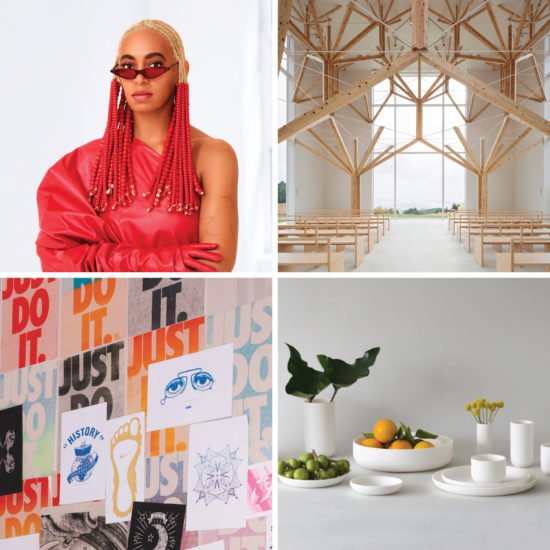Next month, it will have been one year since Angelina Jolie covertly threw open the doors to Atelier Jolie. Located at 57 Great Jones Street, the squat carriage house formerly owned by Andy Warhol and leased as studio space by Jean-Michel Basquiat, Atelier Jolie pays homage to its roots as a makers’ space. The street level is dedicated to retail—Jolie’s in-house ready-to-wear label is stocked there—and hosts a café run with Eat Offbeat, an organization that works with refugee chefs. But atelier translates to workshop, after all, and where Atelier Jolie really stands out is in how it connects its visitors to star artists and designers through talks (their last was with Mickalene Thomas), tailoring and silk screening workshops, and residencies.
Over the past year, talents have included the likes of Simon Ungless, a textile artist who worked closely with Lee Alexander McQueen, and painter-sculptor Chaz Guest. This past week it was artist-designer Valerj Pobega, whose hand-painted and custom silk garments have featured prominently in the music videos and tours of Madonna and Beyoncé. LACMA even acquired a dress she painted for Lady Gaga’s Emmy-winning turn on American Horror Story: Hotel; Jolie herself wore two of Pobega’s hand-painted pieces in a recent cover shoot for CR Fashion Book. But in the spirit of democratizing design, the point of her Atelier Jolie residency was to extricate her work from the hallowed halls of institutional archives and Hollywood sets, allowing atelier guests to collaborate in one-on-one appointments to customize their own wardrobes.
“My hope is for Atelier Jolie to be a home for artists, and we want 57 to be a place where people can create, be inspired, and participate in the creative process,” Jolie tells Surface. “Doing this alongside artists, designers, and craftsmen who might otherwise be inaccessible is important to how we operate and see the world. We’ve been fortunate to have some talented individuals in residence, including Valerj.”
Pobega likens the process of creating a custom garment to an “open conversation,” especially with guests who have never collaborated with a designer one-on-one. “Poetry, literature, and music are the main inspiring forces in my work and art. In my clientele, [there are] so many musicians because music is something I connect to as well,” she says. Whether it’s a celebrity or a first-time client, “it’s just about having an understanding of their preference, and then it’s really an open conversation.”



